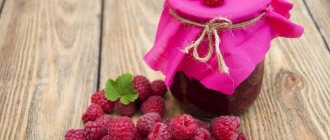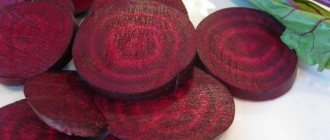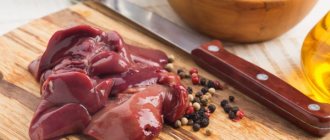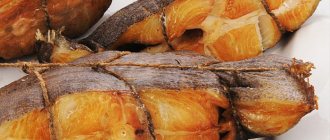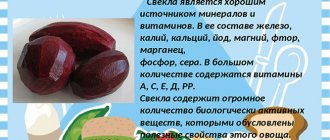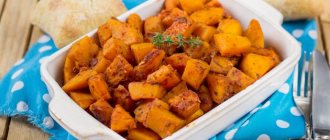When talking about yeast-free baked goods, we mean a product made only with natural leaven, consisting of water and flour. Recently, products that are made without the use of yeast have become popular. Many buyers believe that yeast-free bread brings only benefits to a person and do not think about the fact that if consumed in excess, it can cause harm to the body.
Few people today can do without fragrant and tasty bread. There is a wide variety of different baked goods on the shelves of shops and supermarkets. The main representatives of such products are whole grain breads, which many use for weight adjustment when losing weight. These products contain the maximum amount of useful components and do not contain yeast that is unsafe for the body.
- Common Questions
Chemical composition and calorie content of yeast-free bread
The chemical composition of yeast-free bread contains all kinds of vitamins and is rich in healing properties. It contains useful vitamins of groups such as PP and B, which stimulate the metabolism of nutrients and help improve brain functioning. The great benefit is that these vitamins are not broken down during cooking, maintaining their beneficial properties. Vitamins of the PP group also contribute to the proper production of many hormones: cortisol, insulin, testosterone, and so on. Yeast-free bread also contains a lot of other useful components that do not cause harm, but only help improve the functioning of many organs: magnesium, phosphorus, potassium, proteins and carbohydrates.
Another useful property is its relatively low calorie content when compared with other types of bread.
Comment! Every 100 g contains only 200 kcal.
The energy value, or more precisely, the concentration of proteins, fats and carbohydrates in it is as follows:
- proteins – 5.7 g (13%);
- fats – 0.51 g (3%);
- carbohydrates – 37.54 (84%).
Useful properties of yeast-free bread
If we compare rye bread with other representatives of this product, it occupies the undisputed leadership in calorie content. The second benefit of bread without yeast is the complete absence of yeast in it. Scientists have long come to the conclusion that they can be harmful to health.
For the gastrointestinal tract
The bread has a very dense structure. It can have a beneficial effect on the functioning of the digestive system as a whole, since consuming such a product does not harm digestion, but only significantly reduces the load on the pancreas and liver. By consuming yeast-free bread, the likelihood of flatulence and stomach problems is reduced.
For anemia
Many modern people, due to the special routine of modern life, are susceptible to such a dangerous disease as anemia. Its main symptoms:
- fatigue;
- prostration;
- dizziness;
- pain in the temple area.
Important! Regular consumption of yeast-free bread will help reduce the likelihood of developing anemia to zero, and if it is present, it will help in treatment.
This is possible due to the saturation of many vitamins and fatty acids.
For cancer prevention
The benefits of rye yeast-free bread are undeniable. It contains a large number of antioxidants, which can act as a good preventative for many diseases. The presence of selenium, chromium and vitamins of various groups in rye bread without yeast helps prevent the development of oncology.
For heart diseases
Doctors advise choosing a yeast-free product for regular meals for those people who suffer from diseases and heart problems. Regular consumption of this bread will help:
- reduce cholesterol levels;
- strengthen the pectoral muscle;
- normalize blood pressure.
For athletes
Yeast-free bread is no less important for athletes, as well as for the category of people who adhere to a healthy lifestyle. The basis of nutrition is low-calorie food, filled with useful ingredients and vitamins, rich in beneficial properties. This is the type of food prepared without yeast. It can give more strength and energy, benefiting the body, and improve the general condition of the human body.
Is it good to eat yeast-free bread when losing weight?
If you want to lose weight without introducing harmful yeast components, an alternative option is in favor of baking and traditional bread, famous for its properties. For weight loss, yeast-free whole grain bread will be useful; its calorie content is very low.
The composition contains useful components due to their properties. Their presence ensures long-term saturation of the body, while a person receives a minimum of harm and calories, so every girl knows about the benefits of yeast-free bread for her figure. Thanks to its quickly satiating properties, the risk of overeating is minimized.
Is it possible to have yeast-free bread for diabetes and pancreatitis?
Not only for obesity, experts recommend eating yeast-free baked goods, because they are rich in nutrients and microorganisms, but the calorie content is very low.
Attention! For people suffering from diabetes, yeast-free baked goods are useful due to their ability to reduce cholesterol levels and blood sugar.
The presence of Omega 3 and Omega 6 acids normalizes the functioning of the cardiovascular system.
For pancreatitis, yeast-free sourdough bread is useful, because it will not irritate the pancreas, but in some cases it will also have a diuretic effect (if it is made with hop sourdough).
Medicinal sandwich
If you have any health problems, you need to be especially careful when choosing the type of bread. For example, for people suffering from diabetes, products are produced with a reduced carbohydrate content and prepared with sorbitol or xylitol (protein-wheat, protein-bran). If you have kidney disease, it is better to buy bread without salt (achloride, salt-free peeled).
If you have a thyroid disorder and a lack of iodine in your diet, it is advisable to use products enriched with potassium iodide or seaweed. They make bread with low acidity for people suffering from stomach diseases, and protein-free bread for those with impaired protein metabolism. Even for those who consider themselves absolutely healthy, it would not hurt to eat bread enriched with vitamins, micro- and macroelements for prevention.
Which bread is healthier: yeast-free or yeast-free?
After lengthy studies, experts have found that regularly adding fermentation products to food only causes harm, causing fatigue and fatigue. A person easily perceives negative environmental factors; all beneficial properties are lost from the product. If you observe lovers of delicious yeast baked goods, you will notice that they have weak immunity and rapid susceptibility to diseases and infections.
This leads to the conclusion that for constant nutrition it is best to use bread without baker's yeast, which has a positive effect on the body. One point should be taken into account - industrially produced products do not actually contain baker's yeast, but there are other components and specific properties and features. Often in production, to obtain more luscious products, special crops are used, which are called wild yeast (hop cones or willow twigs). As studies show, their effect is virtually no different from the effect on the body of bakery analogues.
Therefore, the benefits and harms of store-bought yeast and yeast-free baked goods are the same. If you want to eat healthy, nutritious bread, then it should be prepared exclusively with unleavened dough.
Don't cut off the mold!
No matter what healthy type of bread you buy, if it turns out to be unbaked, expired, overdried or dirty, such a product can only cause harm. A bad loaf can really cause poisoning, cause flatulence, bloating, and gastritis. Therefore, do not grab the first brick you come across, but examine it - it should not be crooked, wrinkled and cracked, but appetizing, rosy, whole.
There cannot be black soot on its surface - it contains carcinogens, as well as a red bubbly or whitish crust - this indicates a violation of the production technology. If the bread is sold as slices or halves, you may want to consider the crumb. It should be completely baked and resemble a sponge with uniform small pores.
If the bread is excessively loose, soft and with large air cavities, it means that it was made in an accelerated way with the addition of special improvers - such a product will not bring you anything good. Even less useful is found in bread with a long shelf life - it does not spoil for up to six months thanks to the use of preservatives and acid-containing food additives.
How to make yeast-free bread at home
There are a very large number of recipes for creating bread without the use of yeast bacteria. Among these is soda bread, whose benefits are not inferior to other varieties. Thanks to each of them, you can make a delicious and incredibly healthy product with your own hands. So, baking yeast-free bread with kefir will help you be sure that the finished product will not cause any harm to the body, because they use known components and beneficial properties.
In the bread machine
The easiest way to bake bread from unleavened bread is if you have special equipment in the kitchen - a bread maker.
To prepare a healthy aromatic brick you will need:
- 2.5 tbsp. flour;
- 1 tbsp. kefir;
- 1 tsp each soda and salt;
- 0.5 tsp. Sahara;
- 2 tbsp. l. sesame seeds.
We recommend reading: Baking soda: beneficial properties, uses, how to take
Kefir is poured into the bread machine container, then sugar, soda and salt are added. If there is a concern that the ingredients will not mix during the cooking process, then you can pre-mix the dry ingredients in a glass of kefir. Pre-sifted flour, sesame seeds and other spices as desired are poured into the kefir mold.
If the device has a special fast baking mode of 750 g, then install it. If this is not the case, then first set the kneading for 10 minutes, and then bake for 40 minutes. After turning off the appliance, you should check the readiness of the bread with a toothpick. If it seems that it is still raw, then set the “baking” mode for an additional 10 minutes, otherwise you can expose the body to harmful effects.
In the oven
Cooking unleavened bread in the oven will not cause any difficulties. For it you will need:
- 4 tbsp. regular wheat flour;
- 4 tbsp. bran;
- 3 tbsp. kefir;
- 1 tbsp. vegetable oils;
- 1 tsp. soda
Mix flour, bran and soda in a large container. Mix vegetable oil and kefir separately. Both components of the recipe are mixed until smooth. The resulting dough is divided into small round pieces.
Before baking, the oven is heated to 200 °C. Place the prepared dough in a preheated oven and bake for 20 minutes. The result is delicious, healthy bread. If you wish, you can experiment with the composition, for example, instead of wheat flour, take a coarser grind.
In a slow cooker
To prepare you will need:
- 0.5 l of kefir;
- 100 g each of oatmeal, corn and rice flour;
- 250 g wheat flour;
- 1 tsp each salt and soda;
- 30 g butter;
- 50 g sesame seeds;
- 50 g peeled sunflower seeds.
To prepare a yeast-free product, you will have to purchase wheat flour and grind it with butter. Then all the dry ingredients and seeds are added and mixed. At the same time, add kefir, soda and salt. Then the dry and liquid ingredients are mixed until the mass turns into a thick and sticky dough.
At the same time, lubricate the bowl of the device with a small amount of oil. Pour out the dough and set the multicooker to baking mode for half an hour. After the device turns off, turn the cake over and put it on heat for 10-15 minutes to brown. Then the bread is taken out and placed in a basket, covered with a towel on top.
Cooking technology
For yeast-free bread, you need unleavened dough, which does not involve the use of any type of yeast. In industrial production, for the preparation of such a product the following is used:
- water;
- flour;
- salt;
- vegetable oil;
- natural whey;
- dry wheat gluten;
- citric acid;
- applesauce.
The dough is kneaded in special machines until a foamy mass is formed, highly enriched with oxygen. High saturation of the dough with air will give the baked goods a more magnificent volume. After this, the dough is knocked down and sent into molds. Bread is baked at 260 degrees for 40 minutes.
Bread prepared with hop starter gets a pleasant aroma and airy fluffiness. If there are air bubbles in the bread, then the product was prepared with yeast.
Harm of yeast-free bread and contraindications
The beneficial and harmful properties of yeast-free bread are two sides of the same coin, and not everything is as rosy and simple as it may initially seem. Such a product sometimes causes quite harm to humans, especially if its chemical composition contains a special component called wild yeast. Very often, modern manufacturers under the general name “yeast-free bread” sell to their consumers products for the production of which special yeast compositions are used.
Dough for the production of wild yeast is made using hop cones or willow twigs. At their core, as research has shown, the latter are no different from traditional bakeries.
Important! To prepare yeast-free bread, only unleavened dough is used.
A little history
Many thousands of years ago, people learned to prepare a yeast-free product from flour and water, baking it on stones heated under the sun. This tradition has not sunk into the past: it is in this way, without using sourdough and yeast, that Armenian and Persian lavash, Jewish matzo, Mexican tortilla, Italian focaccia, Indian chapati and the notorious Russian flatbread are obtained.
Content:
- A little history
- The benefits of yeast-free baking
- Chemical composition of the product
- Disadvantages of a product without yeast
- Harm from baked goods that do not contain yeast
- Cooking technology
- Making bread at home
- conclusions
